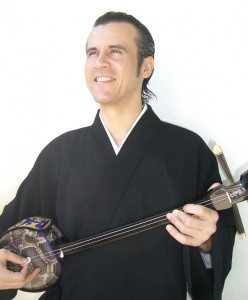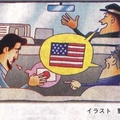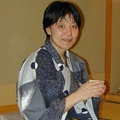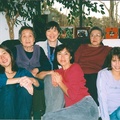“I hate the word ‘half,’ which is used to designate people like me. I always wanted to be someone who is ‘whole.’” The young man raised his eyes to the evening sky and gazed upon the rising moon. It suddenly struck me that Byron and I were like the moon. As we are called “half,” the moon we were looking at is called a “half moon.” But like the moon, “half” is an illusion; there is much more to the moon than what meets the eye and there is much more to us than what people see. Like the moon, we are not half, we are whole.
The metaphor of the moon continues to captivate me as I study identity development in persons of mixed ancestries like Byron Fija. In 30 years of research I have learned that identities can not be quantified. Human affiliations and attachments can not be reduced to percentages. If I explain to someone who I am as “half Japanese” and “half Irish,” it is only for the sake of simplifying things for the listener. I have never met anyone who really felt “half” anything. We all feel a more complex sense of having multiple parts that we are learning to accept and appreciate, balancing their influences and blending them into a synergistic whole. This whole self is greater than the sum of its parts.
People like Byron have also taught me that we do not want anyone, including parents, to tell us who we are based on their limited vision and restricted understanding. We do not want to be controlled by society’s definitions and labels that place us in categories and classifications. We do not want to be confined to boxes that threaten to divide and separate people. We do not even want our identities dictated by parental needs and expectations. We seek self understanding and connections to our many parts. We embrace ways of living that are authentic, meaning expressive of who we are and where we are at home. We desire self definition, the ability to name and label who we believe ourselves to be.
When Half is Whole is a book of stories of the developmental journeys of people with mixed ethnic backgrounds. I gathered these stories from individuals in the United States and Asia whose lives blend Asian and American in their families, whether biological or adoptive. The themes of their lives involve balancing, connecting, and finding meaning in their roots. The stories show how they have engaged in the process of becoming not “half” this or “half” that but whole human beings. In searching for their roots, they discover connections that bring them into contact with communities and their journeys engage them in healing themselves and healing others.
For parents of children who are of different kinds of mixed backgrounds When Half is Whole provides an intimate view into the complex world of identity development. One of the consistent messages I have received from numerous “mixed” people is a sense that parents think they understand their children but in reality do not. Seeing the world through the eyes of their children is much more of a challenge than they realize. Listening to the kinds of stories told in this book is a way of enhancing understanding.
President Obama could help us by using his personal experience to provide leadership in this area. His assertion that he is African American gives him an identity and affiliation with a group of people to whom he is connected through his father’s ancestry and lived experience. But it is only in claiming all of his ancestries that Obama will help us to move beyond the rigid and confining definitions of race and ethnicity. His reasoning that he is black because that is what others see is insufficient as he knows that he is much more than that by what he has received through his mother. Society tells him that he must keep that part hidden, like the dark side of the moon, but more openly embracing all his heritages would give a powerful message that we can all do the same.
I started out writing When Half is Whole thinking that it was a book only about mixed race people. But by listening to the stories of others I began to realize that is was more than that. It is a story about human development of all people. We are all fragmented and made to feel less than whole. We all have parts that others do not see and that we ourselves have lost connection, deny, or reject. But we are striving toward wholeness and this could be called our journey of healing and development. Everyone can see themselves in the moon, whether new moon, crescent moon, half moon, or full moon, there is always much more to us than what meets the eye.
*This article was originally publish on the author’s website on April 27, 2013.
© 2013 Stephen Murphy-Shigematsu







